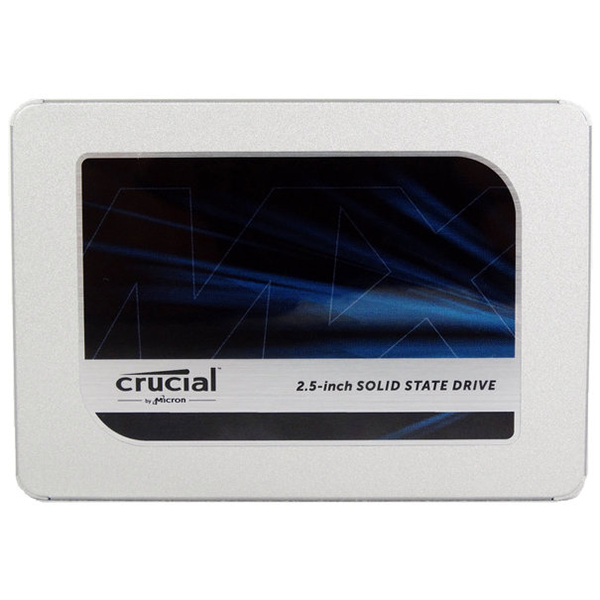Adata XPG SX6000 Pro M.2 NVMe SSD Review: Paying More for Less
Why you can trust Tom's Hardware
1TB Performance Results
Comparison Products
We compared the Adata XPG SX6000 Pro to other 1TB class SSDs. Its closest competitors is the QLC NAND based Intel 660p which boasts a Silicon Motion SM2263 controller. Others include the more expensive Adata SX8200 Pro, which features an SMI SM2262EN controller and Micron 64L TLC, the Corsair Force MP510, which utilizes Phison’s E12 NVMe controller and Toshiba Memory’s BiCS3 flash, and WD’s Black SN750 boasts an in-house NVMe controller design and BiCS3 flash too. We also added in Samsung’s 970 EVO Plus and Intel’s Optane 905p for reference as well as Crucial’s MX500 for good measure to see just how much, or how little, these high-performance NVMe devices outperform a SATA SSD.
Game Scene Loading - Final Fantasy XIV
The Final Fantasy XIV StormBlood benchmark is a free, real-world game benchmark that easily and accurately compares game load times without the inaccuracy of using a stopwatch.
The SX6000 Pro’s game load performance lags behind the group slightly. With a total load time of 22.7 seconds, it is about two seconds slower than the Crucial MX500 and falls into last place.
Transfer Rates – DiskBench
We use the DiskBench storage benchmarking tool to test file transfer performance with our own custom 50GB block of data. Our data set includes 31,227 files of various types, like pictures, PDFs, and videos. We copy the files to a new folder and then follow up with a reading test of a newly-written 6.5 GB file.
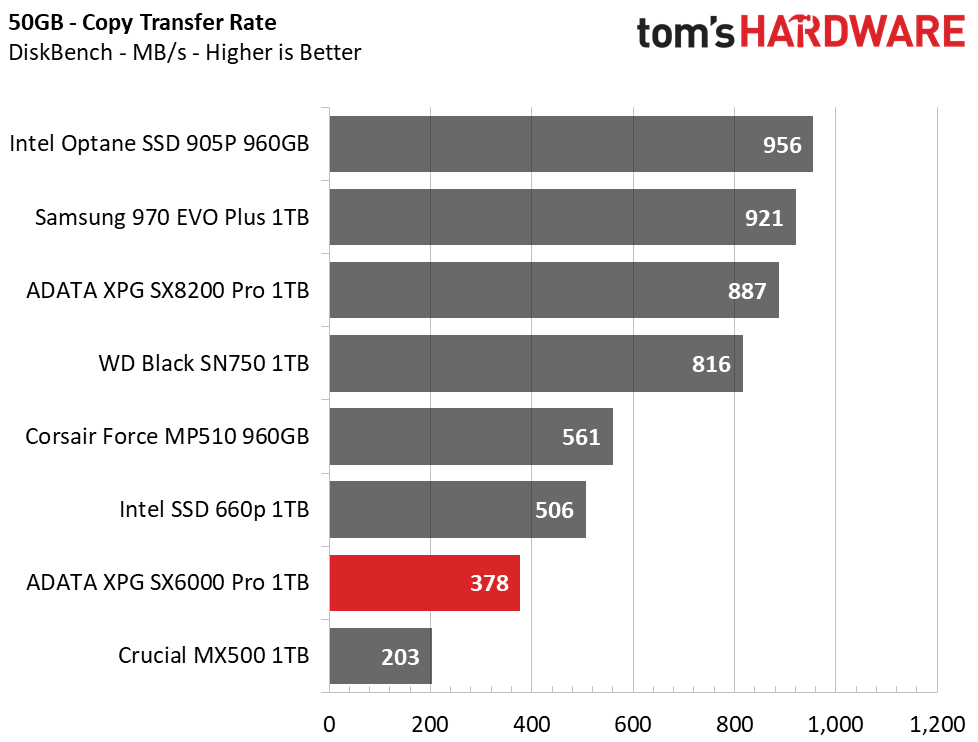
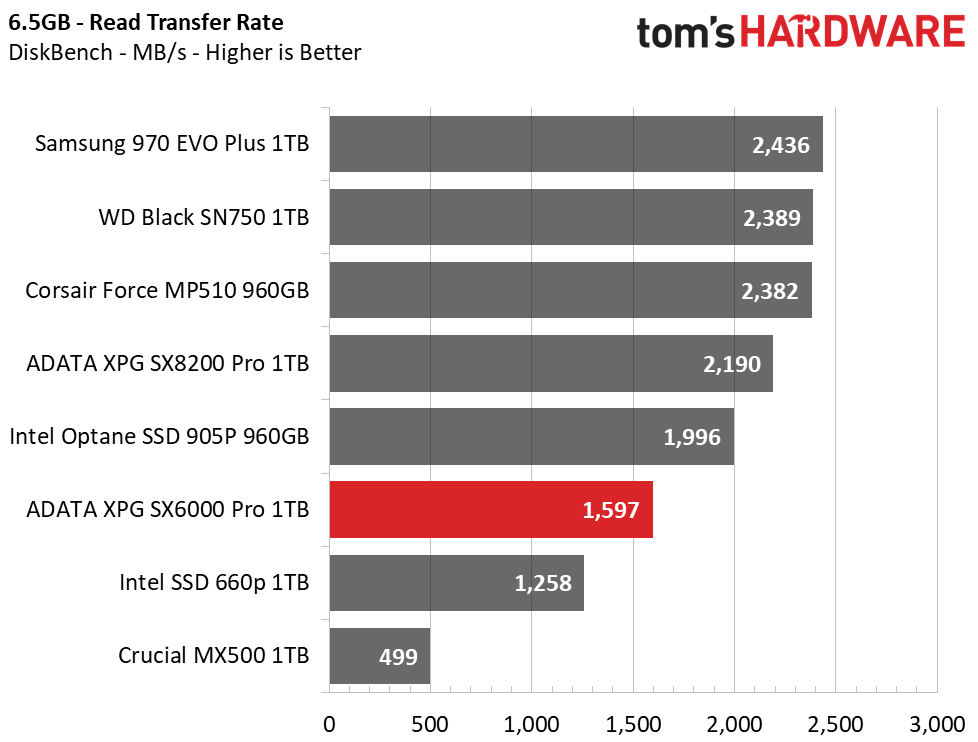
Adata’s SX6000 Pro does a bit better than the MX500 when copying a bunch of random files, but even so, it still lags behind most other NVMe SSDs. Even Intel’s QLC based 660P outperforms it by over 100 MBps in this instance. It is a little faster in large single file reading, however. When reading back out 6.5GB file, it averaged ~350MB/s faster performance than the 660P and easily put the smackdown on the MX500 with three times the performance.
Trace Testing – PCMark 8 Storage Test 2.0
PCMark 8 is a trace-based benchmark that uses Microsoft Office, Adobe Creative Suite, World of Warcraft, and Battlefield 3 to measure the performance of storage devices in real-world scenarios.
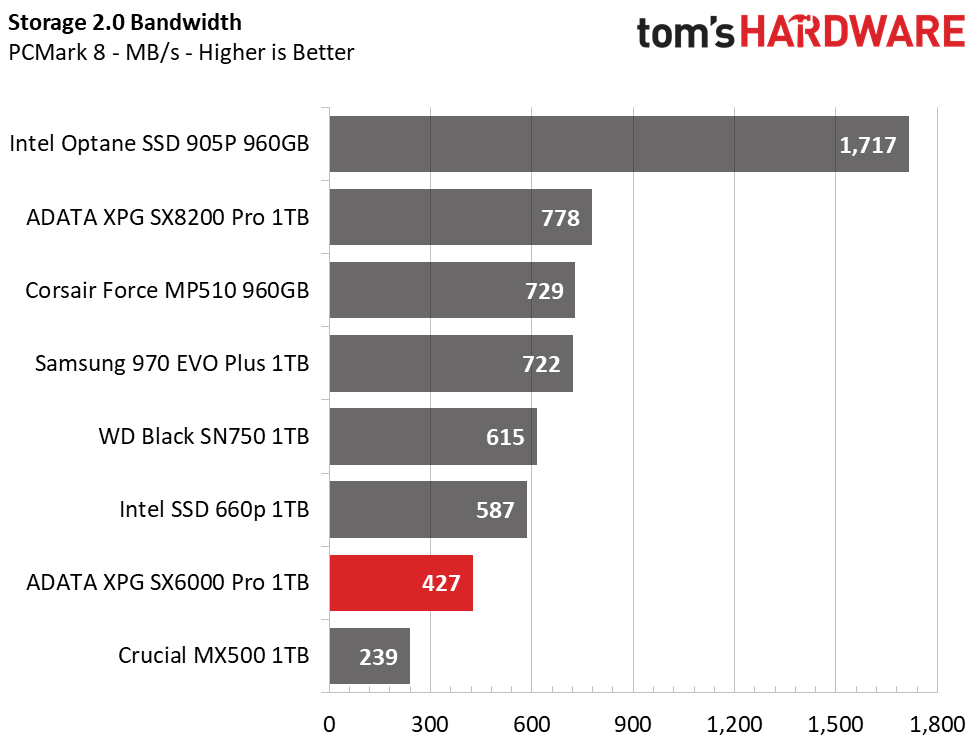

The SX6000 Pro delivers a decent score in PCMark 8’s storage test. With a total score of 5,054 points and an average bandwidth of 427 MBps, it outperforms any SATA based SSD, but it isn’t quite as good as the other NVMe SSDs in our comparison pool. Realtek has a bit more optimization to do under light workloads if it wants its controller to be competitive.
Get Tom's Hardware's best news and in-depth reviews, straight to your inbox.
Trace Testing – SPECworkstation 3
Like PCMark 8, SPECworkstation 3 is a trace-based benchmark, but it is designed to push the system harder by measuring workstation performance in professional applications. The full suite consists of more than 30 workloads, but we've opted to only run the storage benchmark which uses only 15 of them and categorizes the results into 5 market segments for scoring: Media & Entertainment, Product Development, Life Sciences, Energy, and General Operations.

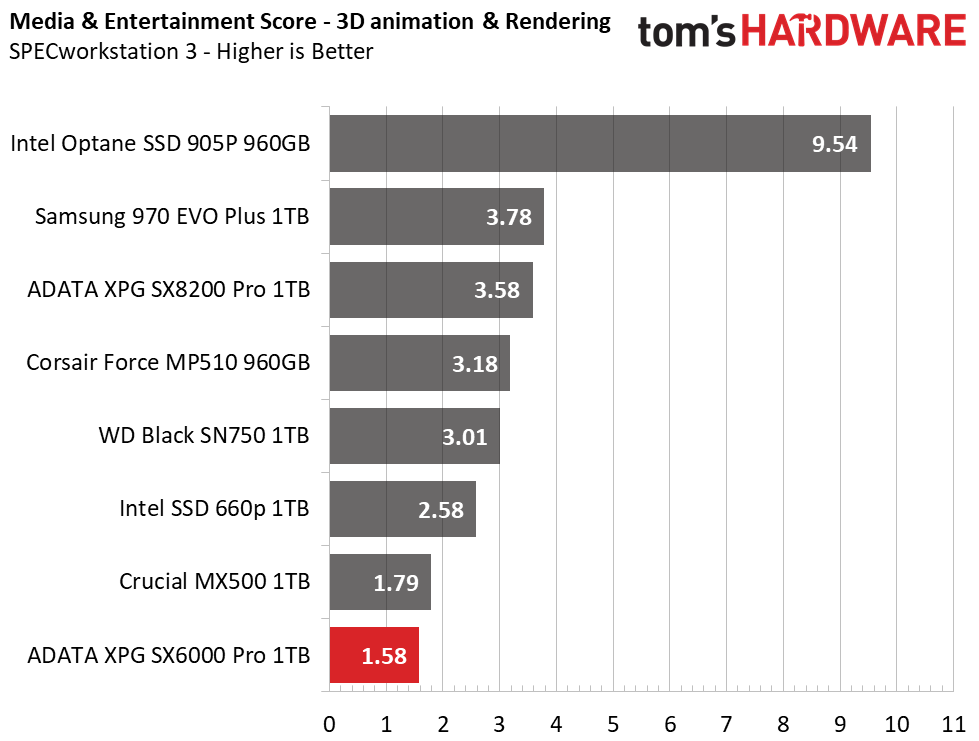


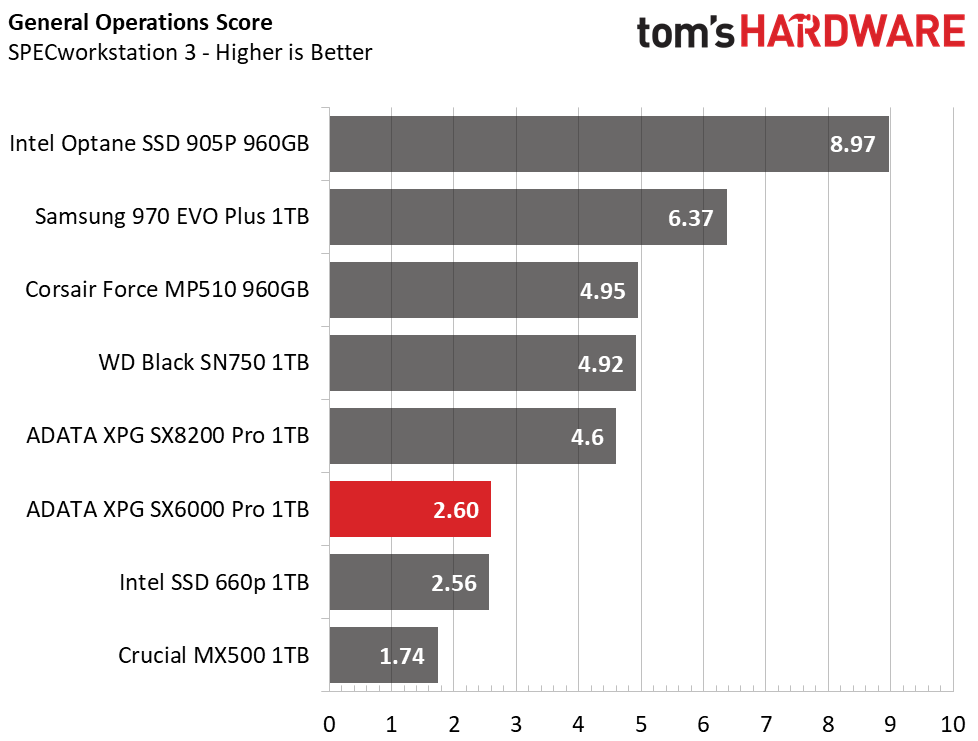
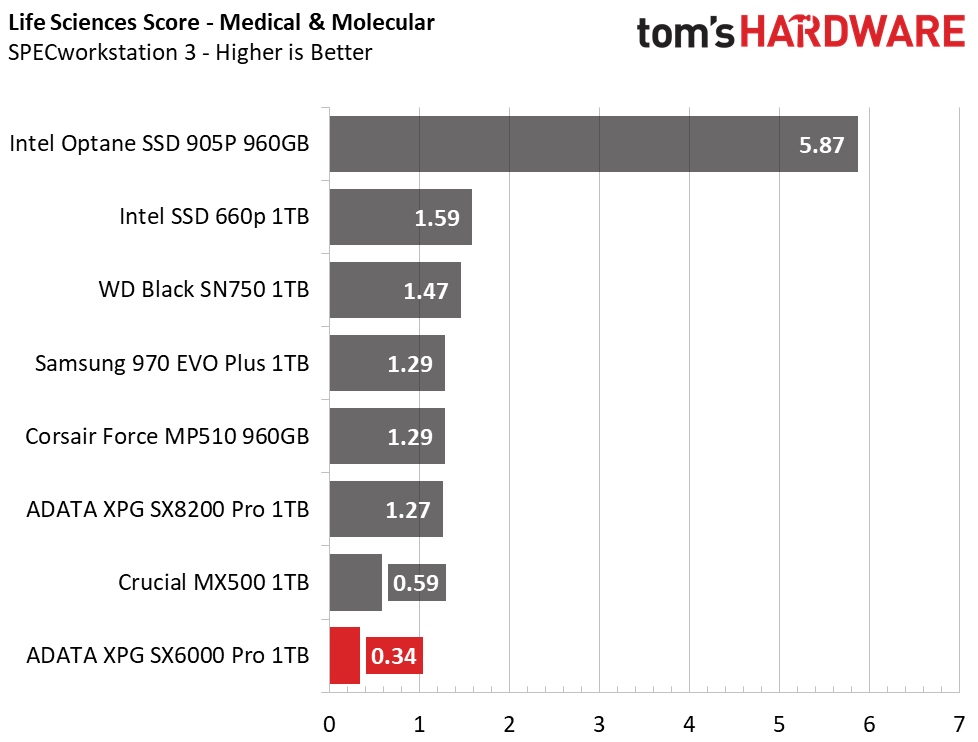
Because the drive is a DRAMless based SSD, we didn’t expect the SX6000 Pro to do too well during this test because it is so write-heavy. And unfortunately, it matched our low expectations rather than exceeding them. The SX6000 Pro falls into last place, with a score trailing even the MX500, but it did do a little better under the general operations testing.
Synthetic Testing - ATTO
ATTO is a simple and free application that SSD vendors commonly use to assign sequential performance specifications to their products. It also gives us insight into how the device handles different file sizes.
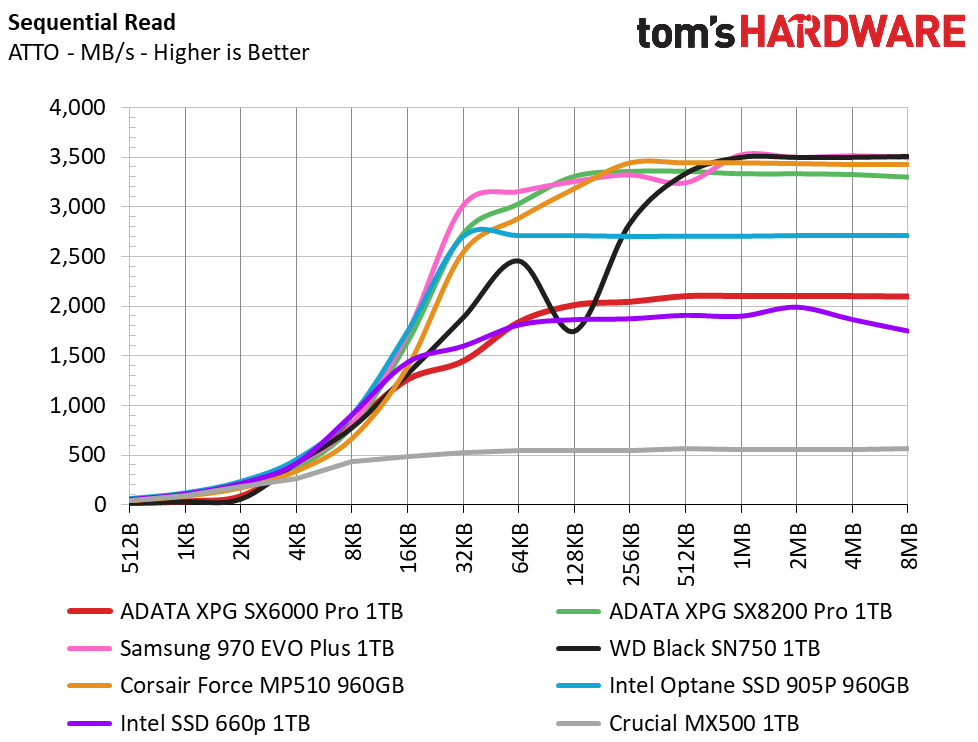
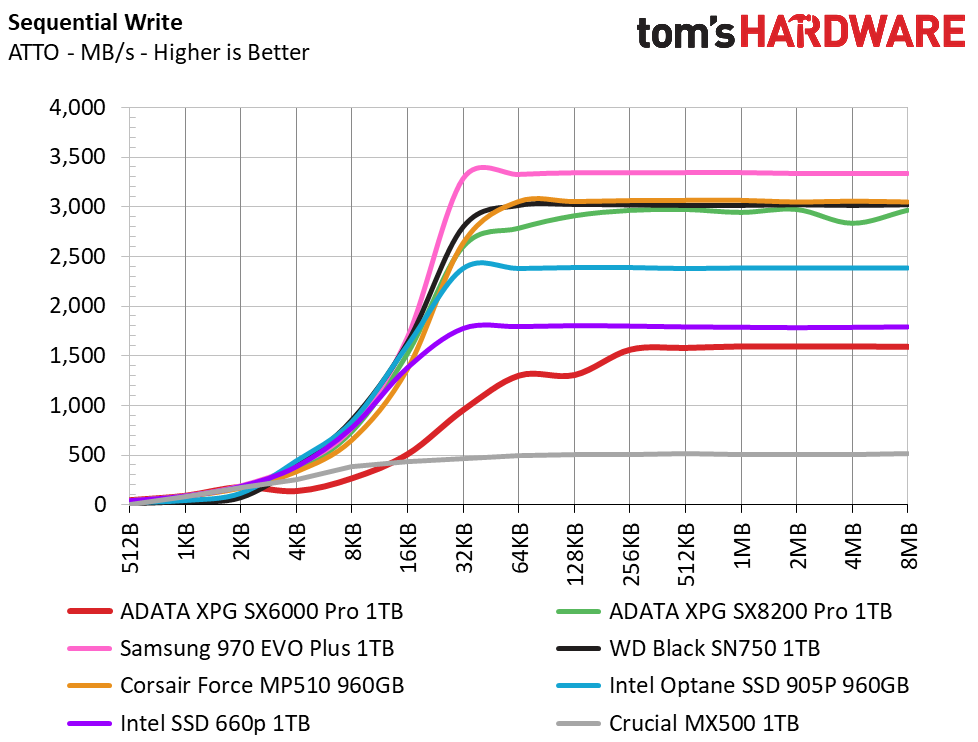
Read and write speeds are exactly where they should be. The SX6000 Pro hits 2.1 / 1.6 GBps read/write in ATTO. It gives the Intel 660p a good run for its money while reading smaller file sizes, but the write performance lags behind heavily.
Synthetic Testing - iometer
iometer is an advanced and highly configurable storage benchmarking tool that vendors often use to measure the performance of their devices.
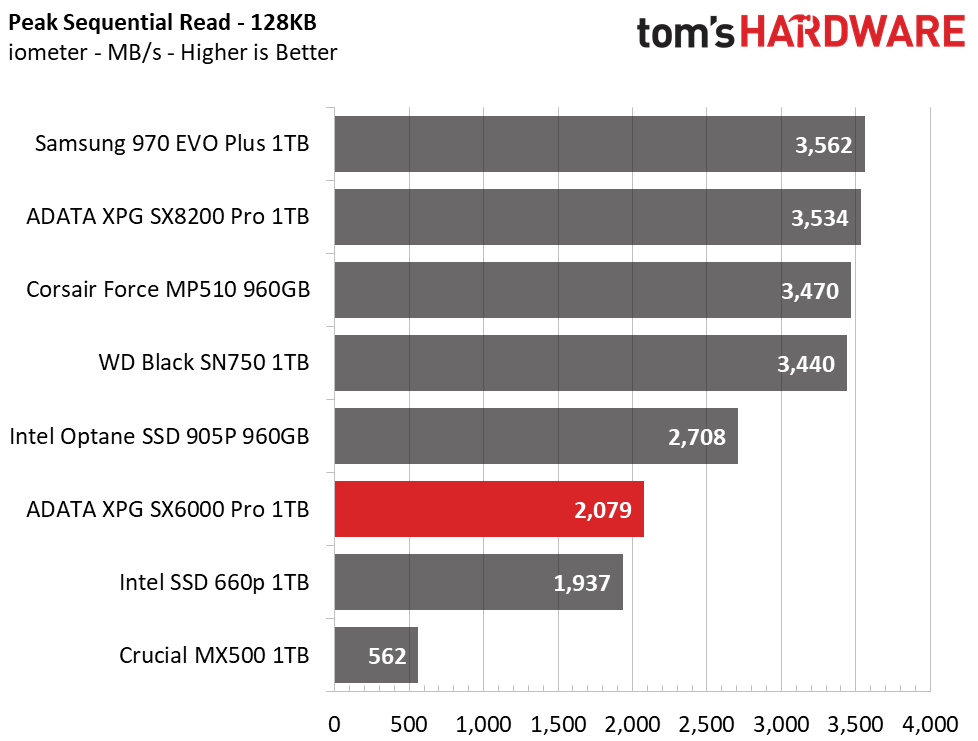
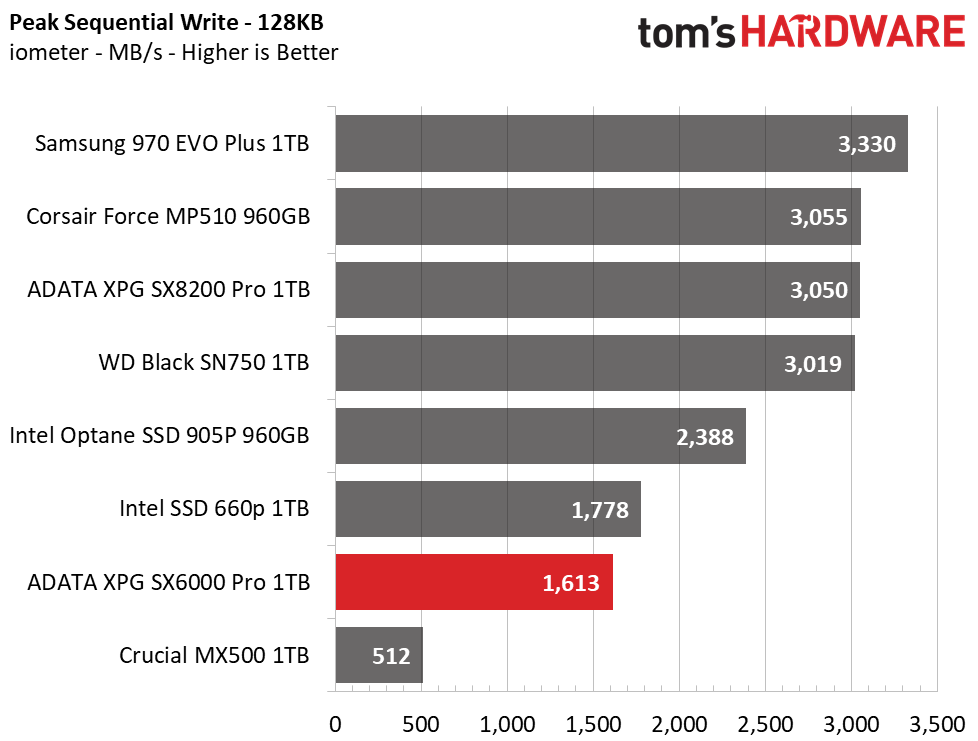
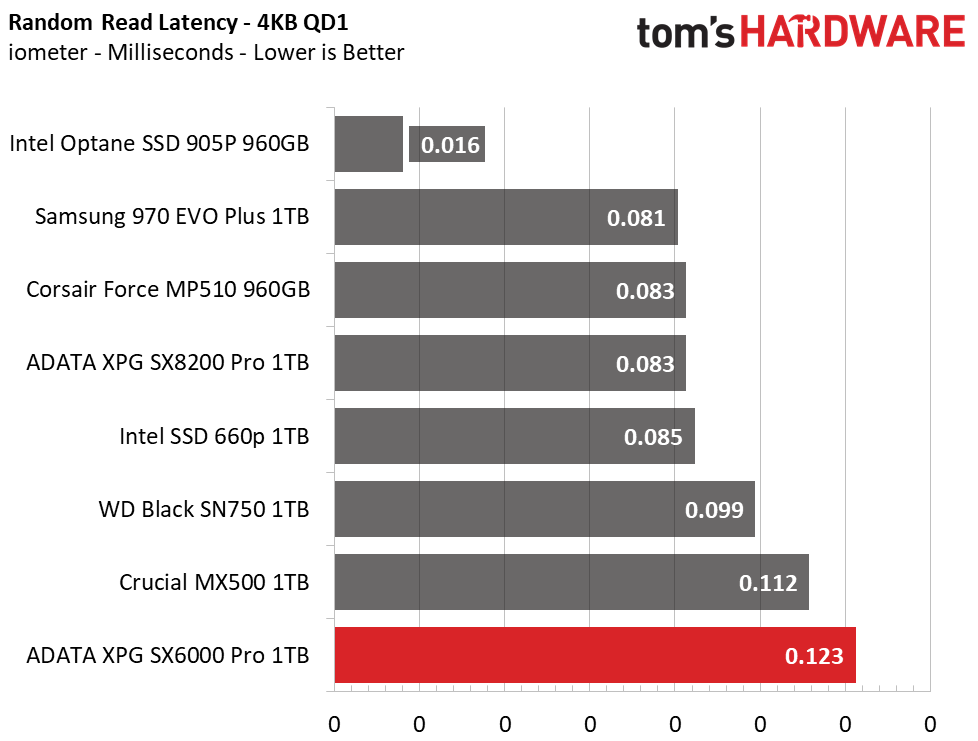
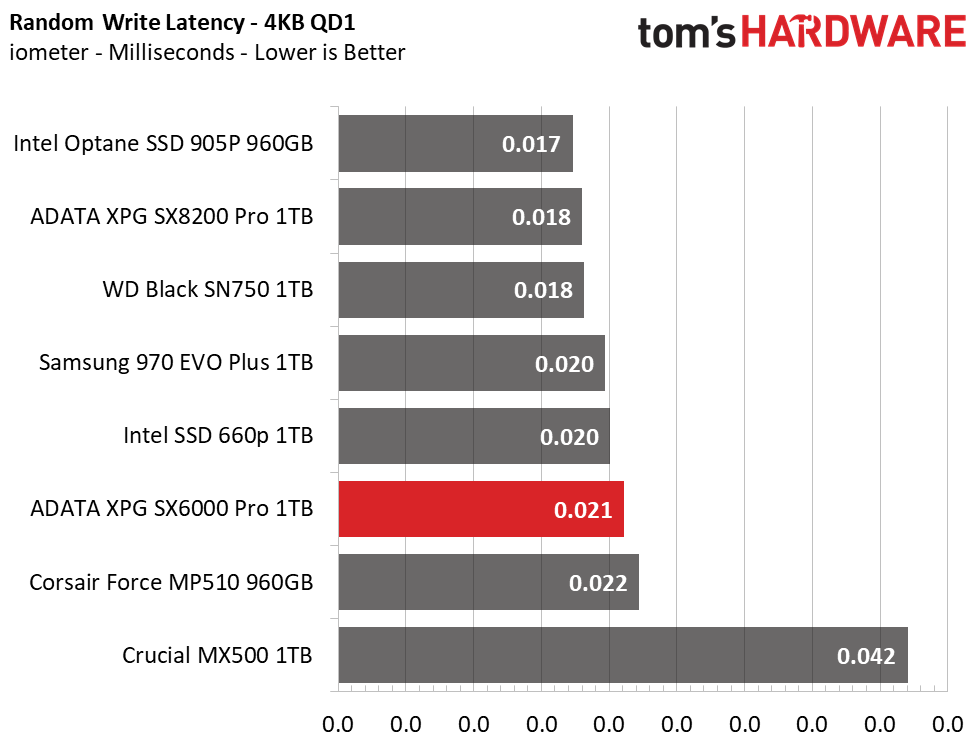


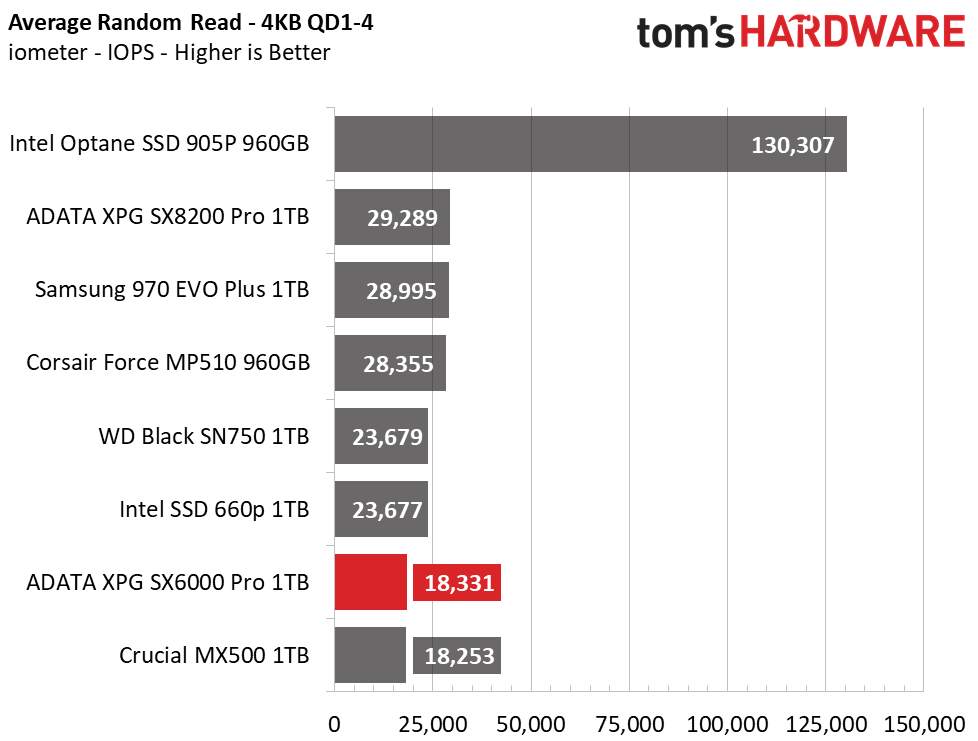

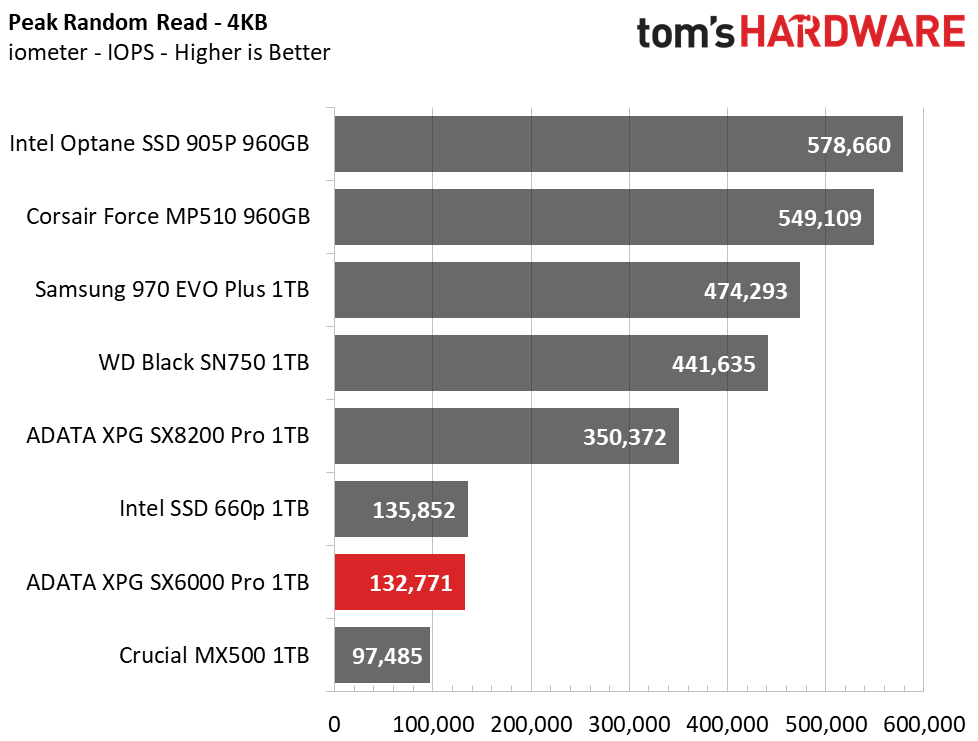
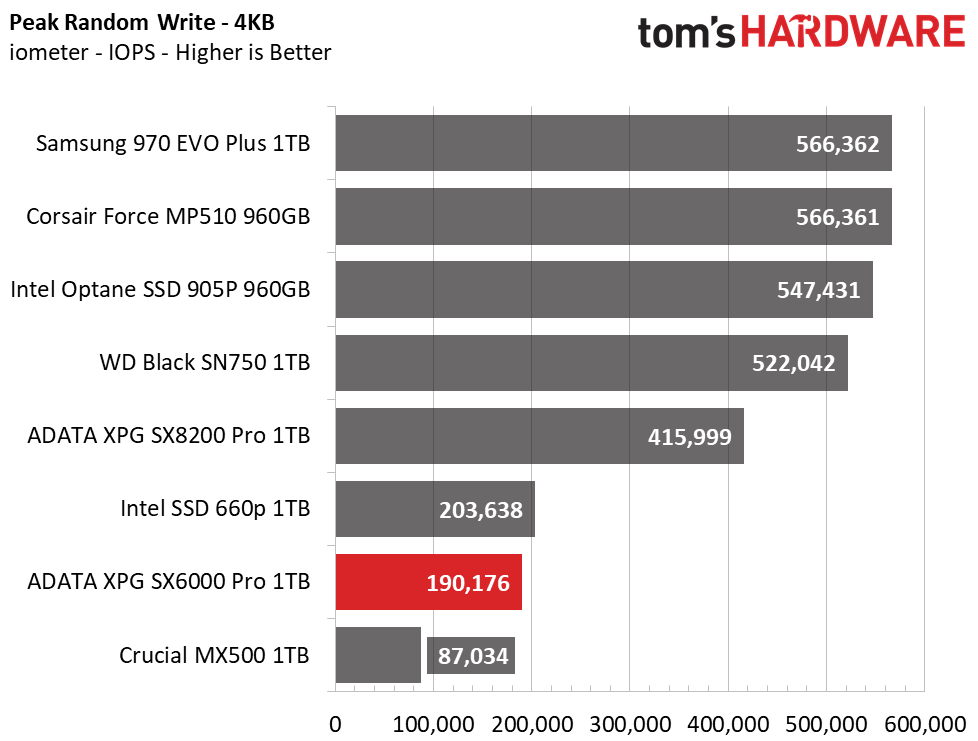
Again, sequential performance pushes 2.1 / 1.6 GBps in testing under iometer. Random performance is also slower than most other SSDs. Overall, the SX6000 Pro ranks last among its competitors in random read performance at a QD of 1 and third to last in writing. Scaling up the test to QDs 2 and 4 give it a slight lead over the MX500 when considering its average performance, but still, overall, it lags behind the NVMe based competition.
Sustained Sequential Write Performance
Official write specifications are only part of the performance picture. Most SSD makers implement an SLC cache buffer, which is a fast area of SLC-programmed flash that absorbs incoming data. Sustained write speeds can suffer tremendously once the workload spills outside of the SLC cache and into the "native" TLC or QLC flash. We use iometer to hammer the SSD with sequential writes for 15 minutes to measure both the size of the SLC buffer and performance after the buffer is saturated.



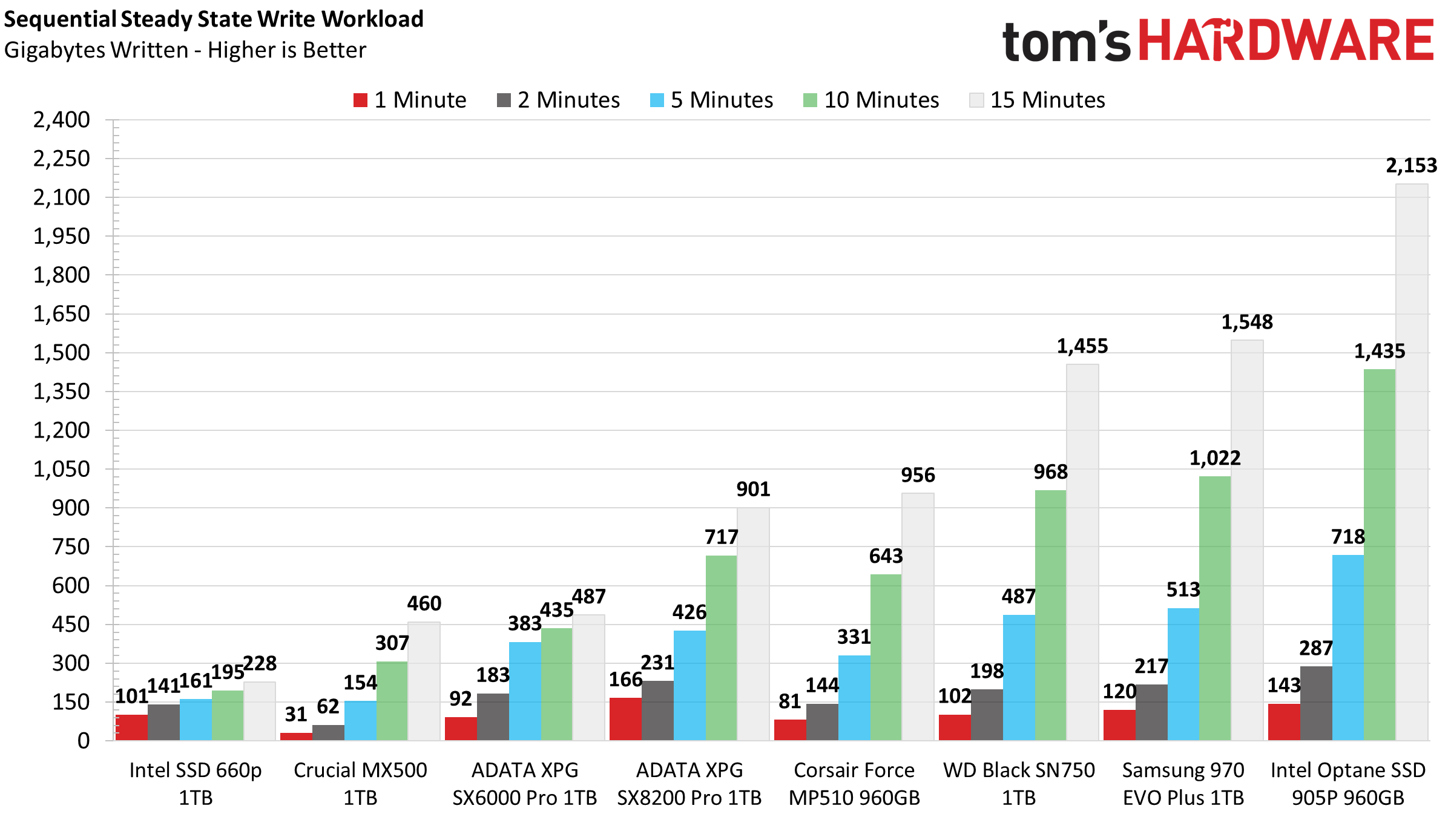
Unlike most SSDs we have tested, the SX6000 Pro doesn’t feature an SLC write cache, but rather an MLC write cache, or so it appears. This enables a larger cache size at the expense of performance. After writing about 370GB of data, the SX6000 Pro’s write speed degrades to an average of 170 MBps, with many IOs dropping down to speeds as low as 15-30 MBps as it tries to keep up with the workload. Overall, it ranks third to last once again.
Power Consumption
We use the Quarch HD Programmable Power Module to gain a deeper understanding of power characteristics. Idle power consumption is a very important aspect to consider, especially if you're looking for a new drive for your laptop. Some SSDs can consume watts of power at idle while better-suited ones sip just milliwatts.
Average workload power consumption and max consumption are two other aspects of power consumption, but performance-per-watt is more important. A drive might consume more power during any given workload, but accomplishing a task faster allows the drive to drop into an idle state faster, which ultimately saves power.
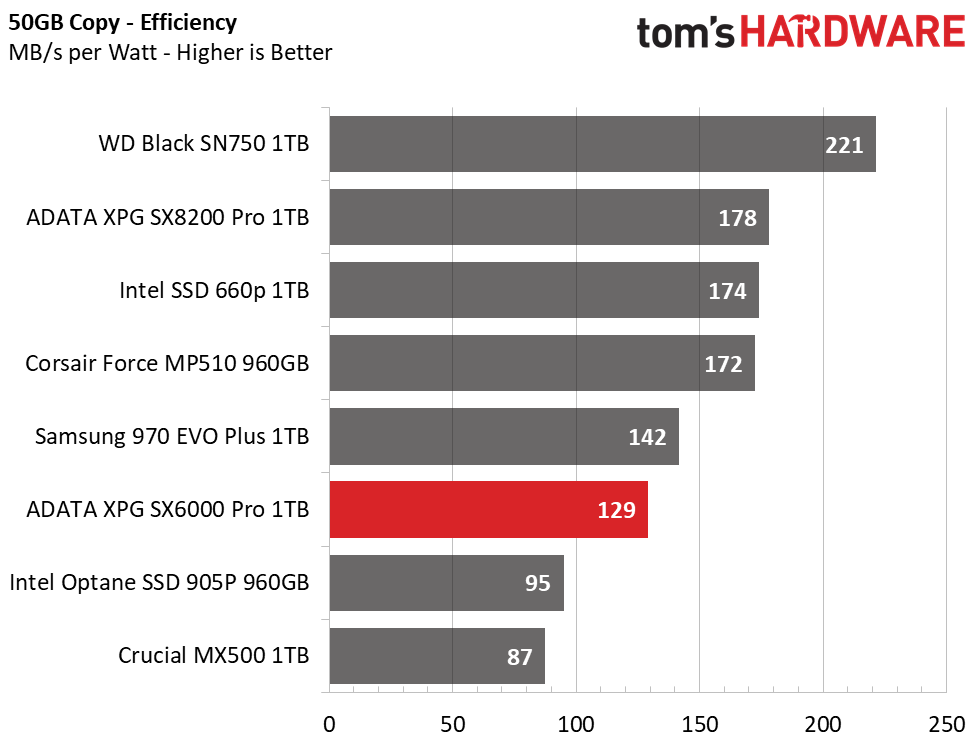
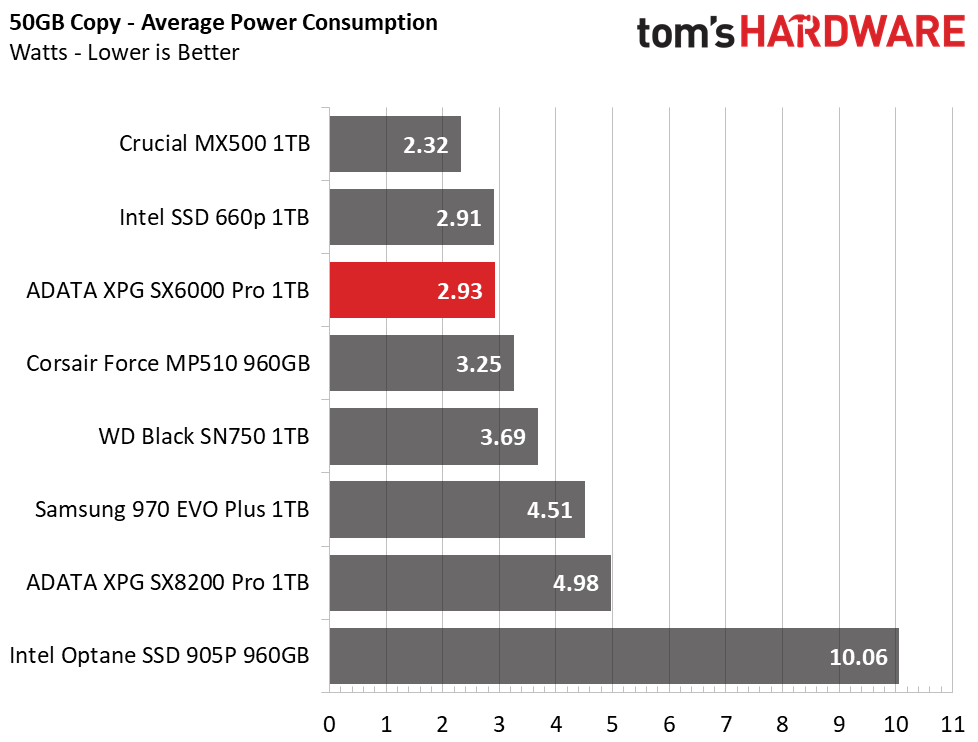
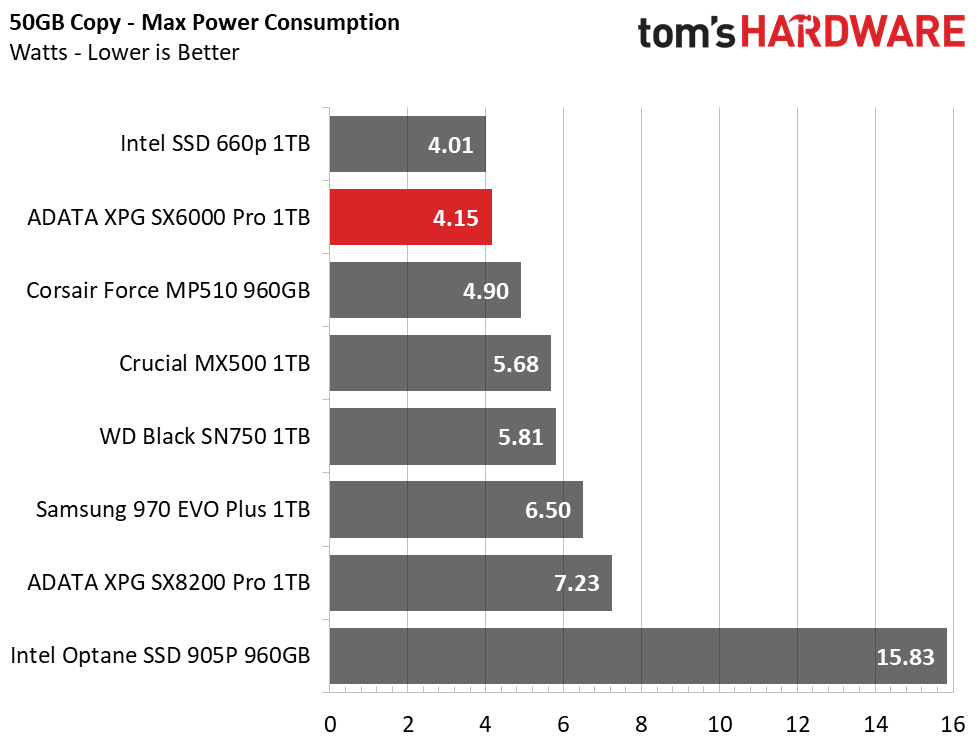
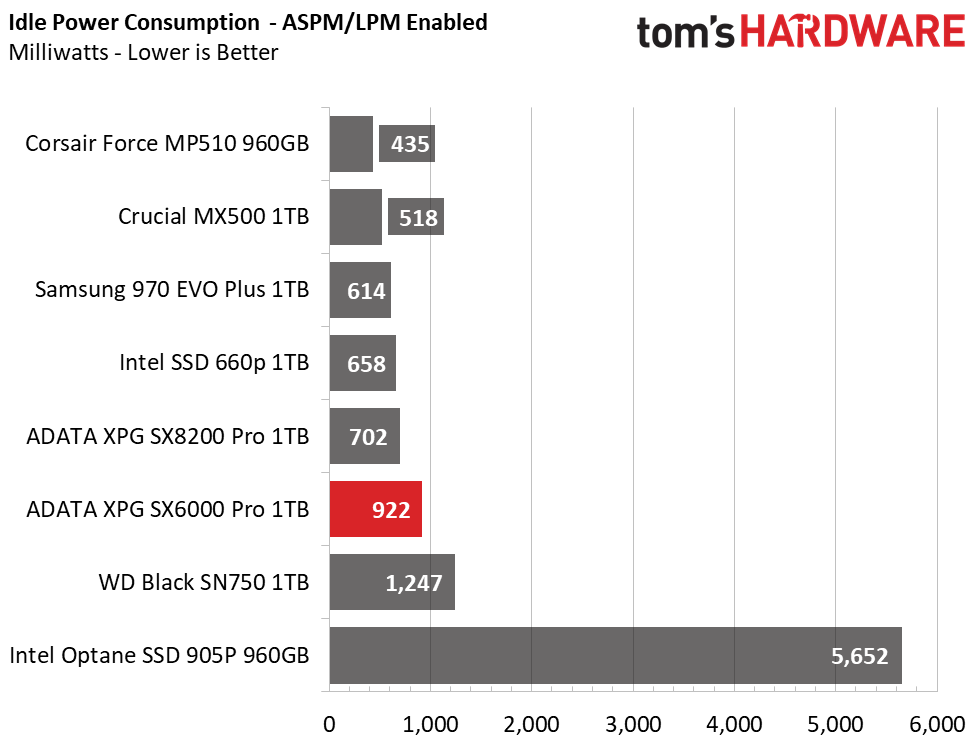

When it comes to the SX6000 Pro’s power efficiency, it ranks behind all the other M.2 NVMe SSDs in our comparison pool. Average consumption was pretty low though, just under 3W and it hit a high of 4.15W, which is just a bit more than what the Intel 660p consumed at most too. But, at idle, it is a power hog, almost as bad as the WD Black SN750. Enabling ASPM helps it a bit, but still, competitors are much more mature in their design and consume up to 34 times less power when doing nothing.
MORE: Best SSDs
MORE: How We Test HDDs And SSDs
MORE: Best External Hard Drives and SSDs

Sean is a Contributing Editor at Tom’s Hardware US, covering storage hardware.
-
refillable I got one of these because it was $10 cheaper than the 660p. I think I still got a decent deal to be frank. It all depends on the price.Reply -
Giroro Pros: "Large SLC write cache "Reply
later:
"Unlike most SSDs we have tested, the SX6000 Pro doesn’t feature an SLC write cache, but rather an MLC write cache, or so it appears. "
Overall this drive seems like a poorly balanced design. Especially considering the SX8200 Pro is only $135 on Amazon right now. -
skinnedballs Hello Sean! Thanks for the review.Reply
I wonder if your SX6000 Pro was a dud or if some other issue was present. Chris Ramseyer reviewed the drive several months back at Tweak Town and had a much better experience, especially where sustained sequential performance was concerned:
https://www.tweaktown.com/reviews/9064/adata-xpg-sx6000-pro-nvme-ssd-review/index2.html -
tlmiller76 I had both a Crucial P1 and this drive (Crucial came in my laptop, bought the SX6000 pro), and having swapped them between the laptops they were in to compare (Dell Latitude 7490 and Dell Latitude 5289), I was far more impressed with the performance of the SX6000 pro than I ever was with the P1. While I haven't had a 660, given the P1 is identical other than firmware, and the sx6000 pro is usually the same price or a few dollars less every time I look for a new drive, I'd take this any day over a 660.Reply -
gadgetwhisperer Replytlmiller76 said:I had both a Crucial P1 and this drive (Crucial came in my laptop, bought the SX6000 pro), and having swapped them between the laptops they were in to compare (Dell Latitude 7490 and Dell Latitude 5289), I was far more impressed with the performance of the SX6000 pro than I ever was with the P1. While I haven't had a 660, given the P1 is identical other than firmware, and the sx6000 pro is usually the same price or a few dollars less every time I look for a new drive, I'd take this any day over a 660.
well, P1 is using QLC just like intel 660p, but it also have DRAM. in my experience, the problem of adata xpg sx6000 pro is when they decide to switch from silicon motion controller to realtek. realtek have less experience and thats why the consistency is quite rough. i already bought dozen of xpg ssd to upgrade my customers notebook, most of earlier version of sx6000 pro still used silicon motion controller, and performance was better (or at least more consistent), then came the sx6000 lite with realtek controller. months later all pro model were also switched to realtek one. The price go lower, but the write performance take a toll. In windows notebook, it still perform well, since the HMB seems to work just fine, but on macbook pro, the write performamce is stuck around 500Mb/s (on par with SATA SSD).
in my experience, at this price point, Lexar with it NM610 offer the best value and performance. 2nd option is Patriot P300 with its phison controller. Adata used to be good, but their decision to use realtek is kinda backfiring, at least at this moment. Maybe firmware upgrade can help them, but who knows


